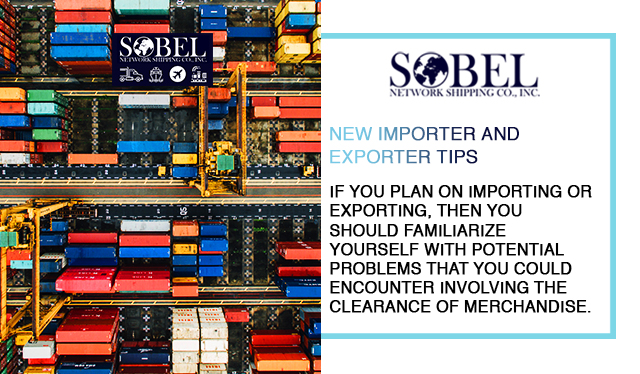If you plan on importing or exporting, then you should familiarize yourself with potential problems that you could encounter involving the clearance of merchandise. Ideally, you should always go over the U.S. Customers and Border Protection (CBP) policies and procedures, so you have a basic knowledge of rules and regulations for importing and exporting into the country.
In this guide, we have outlined a few tips about importing and exploring that might help you along the way.
Import License
At this time, the CBP does not require an importer to have a permit or license. However, there are other agencies that need to request a license, certification, or permit. The particulars depend on the commodity being imported.
CBP serves in an administrative capacity for other agencies so if you are in doubt about if you need a license then contact them directly. You can also visit USA.gov for additional information. Be sure to check out Importing Into the United States for helpful details.
Occasionally, you may also need a license from state or local authorities.
Importer Number
On your CBP entry forms, you will note that they ask for your importer number. This refers to your IRS business registration number. If your business is not registered with the U.S. IRS, then you can list your social security number. You’ll also need to complete CBP Form 5106 and present it to the Entry Branch at a CBP port of entry.
Visit the CBP Website
Any importer or exporter is encouraged to visit the CBP website and take the time to read the section Basic Importing and Exporting. You’ll discover a great deal of useful information such as
- Import requirements
- Arrival of goods
- Classification
- Formal entry vs. information entry
- Restricted merchandise
- Mail shipments
- And more
Take the time to read the Informed Compliance Publications.
Contact CBP Office at Port of Entry
You should always contact the CBP office where your merchandise will enter the country. If you do not know what port your shipment will arrive at, then you’ll need to speak with a CBP import specialist to gain helpful advice. At most ports, entry specialists answer questions and work closely with import specialists.
If you call the CBP for information, be sure to know a great deal of information about the transaction so that the import specialist can assist you. You’ll need to describe the merchandise, country of origin, the composition of the merchandise, intended use, pricing, and more.
Information on Exporting
The CBP website also provides information on exporting. Although CBP offers some information, you’ll also want to visit the U.S. Department of Commerce, Bureau of Industry and Security Web sites.
Try to direct any questions to the CBP officers located at the port where you expect the merchandise to leave the country. You can also call the Department of Commerce’s Trade Information Center if you have additional questions. 1-800-USA Trade or visit their website Export.gov.
Hiring a Customs Broker
If you are importing merchandise for your own use, then you might want to hire a customs broker. All customs brokers have been licensed by CBP. However, even if you opt to hire a customs broker, remember that you are still responsible for all entry documentation given to CBP and you need to make sure it is correct. Also, you must pay duties, taxes, and fees.
Vessel Importation
As of January 26, 2009, the Importer Security Filing and Additional Carrier Requirements (commonly known as “10+2”) went into effect. The rule focuses on the importation of cargo into the U.S. by vessel. You must comply with the rules or face monetary penalties, delays and added inspections. The rule’s criteria are as follows:
All merchandise imported must have the “Importer Security Filing (ISF) Importer”. The Importer Security Filing must be correctly filled out. You’ll also need to submit all fees and duties. For more information visit: Importer Security Filing.
Import Quotas
With import quotas, the amount of volume is controlled during certain time periods. You’ll find two import quotas: absolute and tariff-rate.
- Absolute quotas are usually tettixes or other items brought into the U.S. for commerce.
- Tariff rate quotas are specific goods that are imported at a lower rate of duty during the quota period. When a quota period is reached, importation can still take place but at a higher cost.
Receiving a Bill
Under Title 19, section 1467, of the United States Code (19 U.S.C. 1467), the CBP can examine any shipment entering the United States. As the importer, you must make the goods available for inspection.
There is a cost incurred when the CBP examines a shipment. The merchant is moved to a Centralized Examination Station (CES) where the CBP conducts the examination. The CES will bill for the services such as the unloading and reloading of the merchandise.
If you have any questions about importing or exporting, we encourage you to reach out to Sobel Networking Shipping Company to have all of your questions answered


